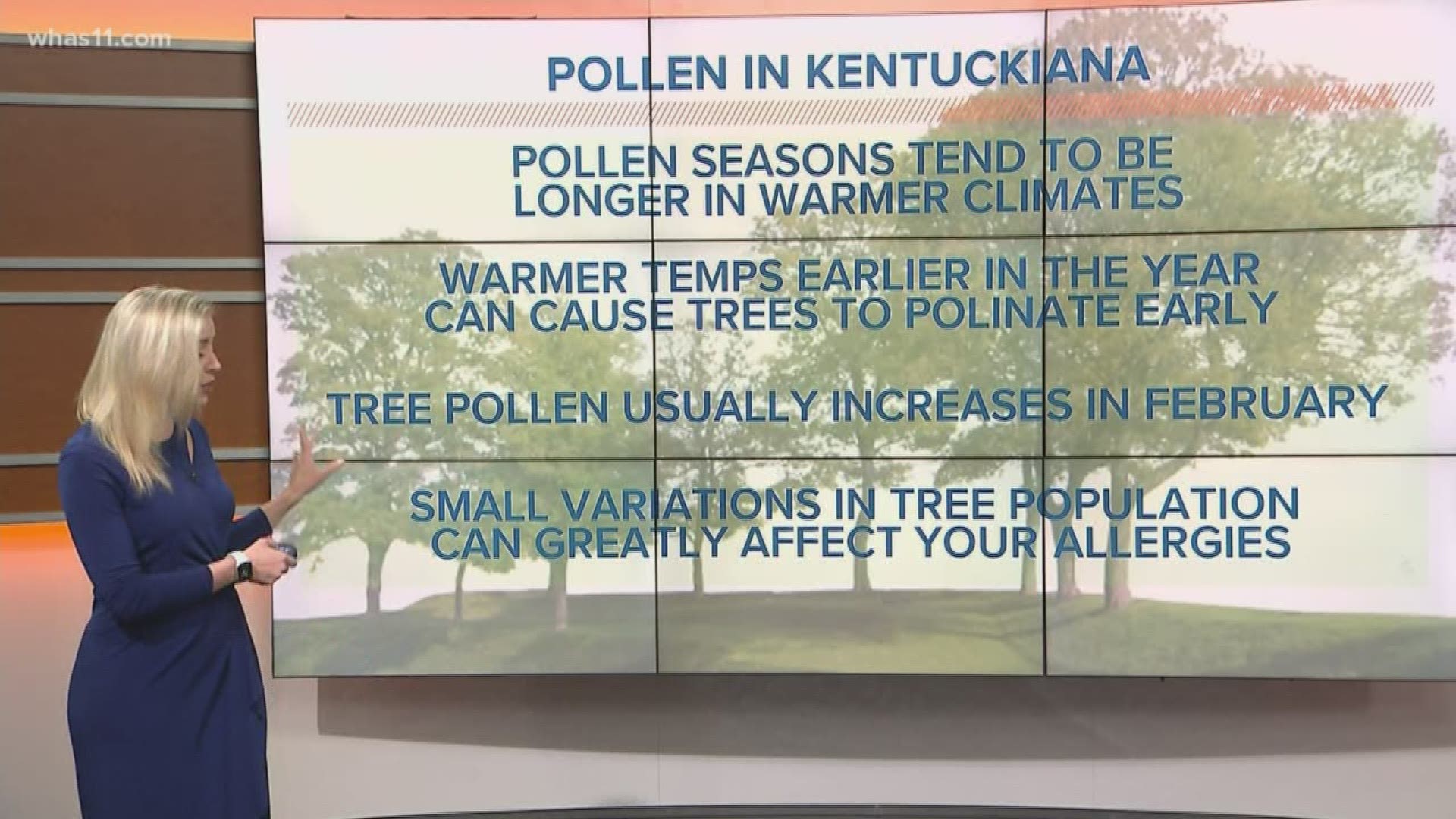LOUISVILLE, Ky. — It's springtime in the Ohio Valley, and we all know what that means: seasonal allergies are starting to ramp up.
If you've lived in this area of the country long enough, you know we always rank as one of the worst spots for seasonal allergies. We have a large variety of trees in the Ohio Valley, and a climate that allows them to grow and pollinate longer than cooler areas of the country.
Pollen seasons tend to be longer in warmer climates and if we see warmer temperatures earlier in the year, pollen counts can go up sooner. These days, tree pollen starts to increase in February and allergy sufferers really start to feel badly around early April.
Also, small variations in tree population can really affect your allergies. If you live downtown where there are fewer trees, your allergies may not be as bad as someone who lives near Iroquois Park.
How does the weather play a role in our pollen counts? On dry spring days, tree pollen can fly freely through the air making it tough for those with allergies.
On rainy days, tree pollen can be knocked down to the ground giving allergy suffers a little relief, but some rainy days can be worse than dry days if grass and weed pollen are abundant, because rain can actually help release more of that into the air.
Hopefully you're prepared for this year's seasonal allergies. We'll continue to show you the pollen counts in your forecast each day on WHAS11.
More Weather Wise:
Contact meteorologist Kaitlynn Fish at kfish@whas11.com and follow her on Twitter (@KaitlynnFish) and Facebook.
Make it easy to keep up-to-date with more stories like this. Download the WHAS11 News app now. For Apple or Android users.
Have a news tip? Email assign@whas11.com, visit our Facebook page or Twitter feed.

